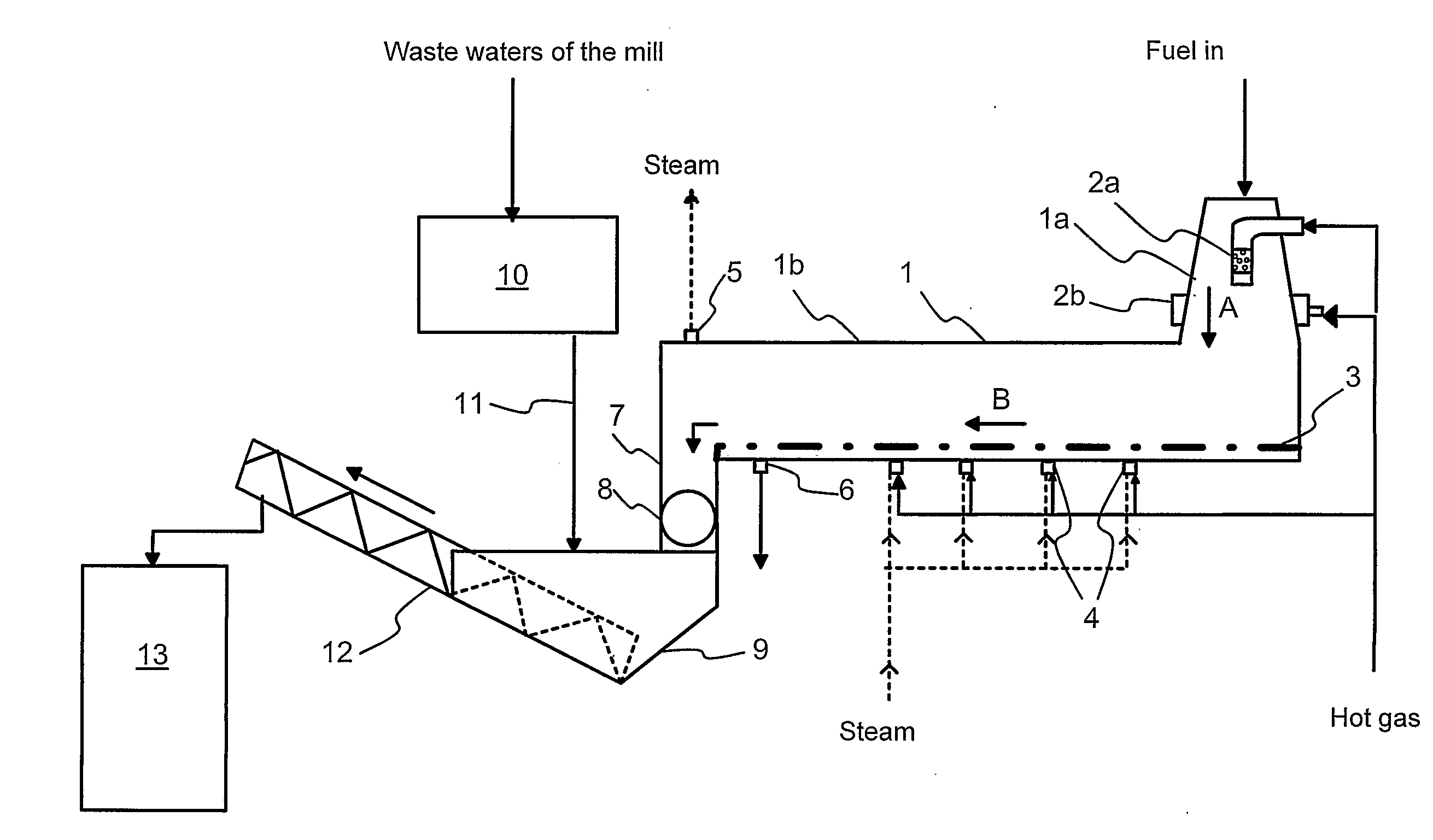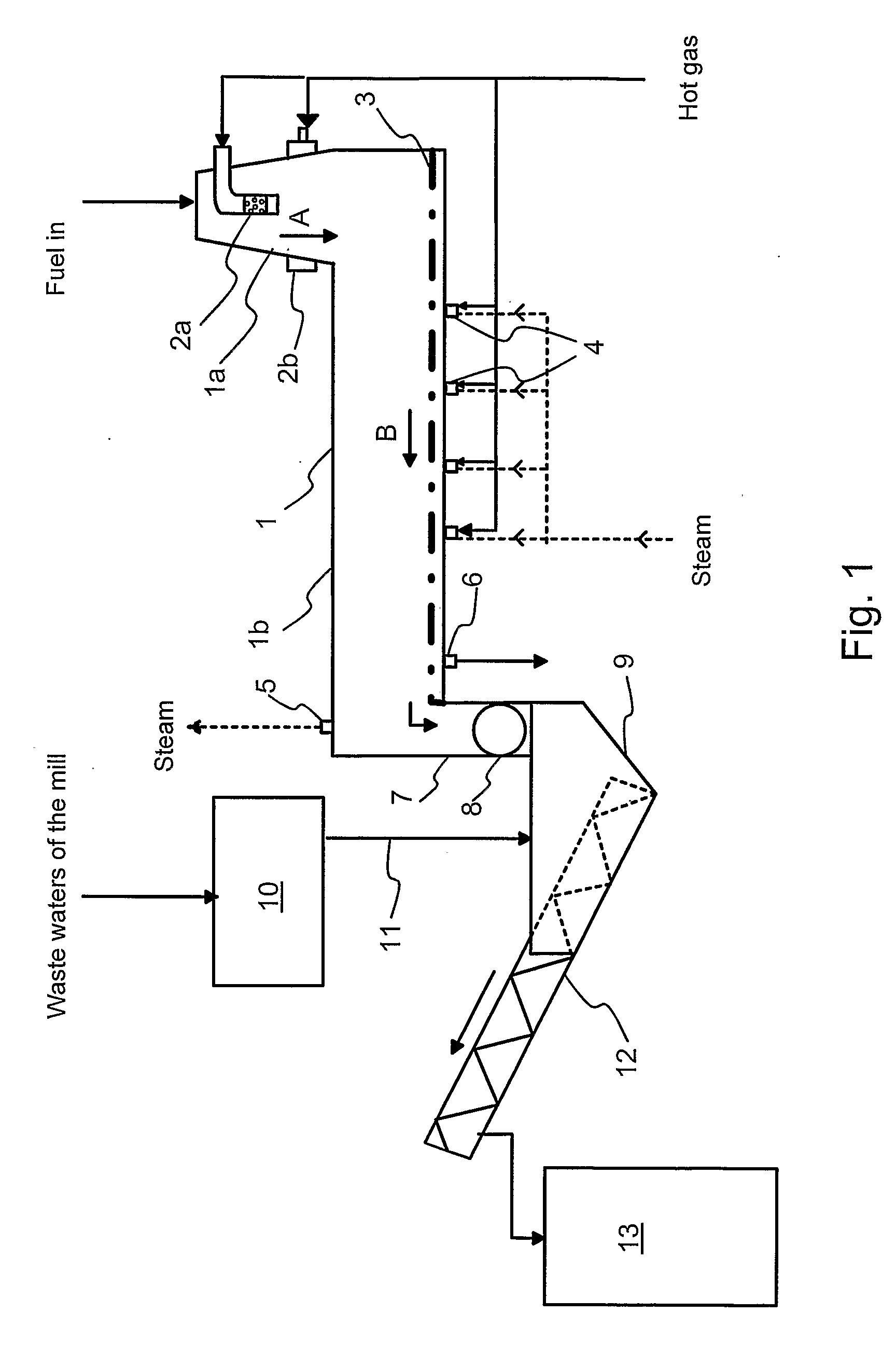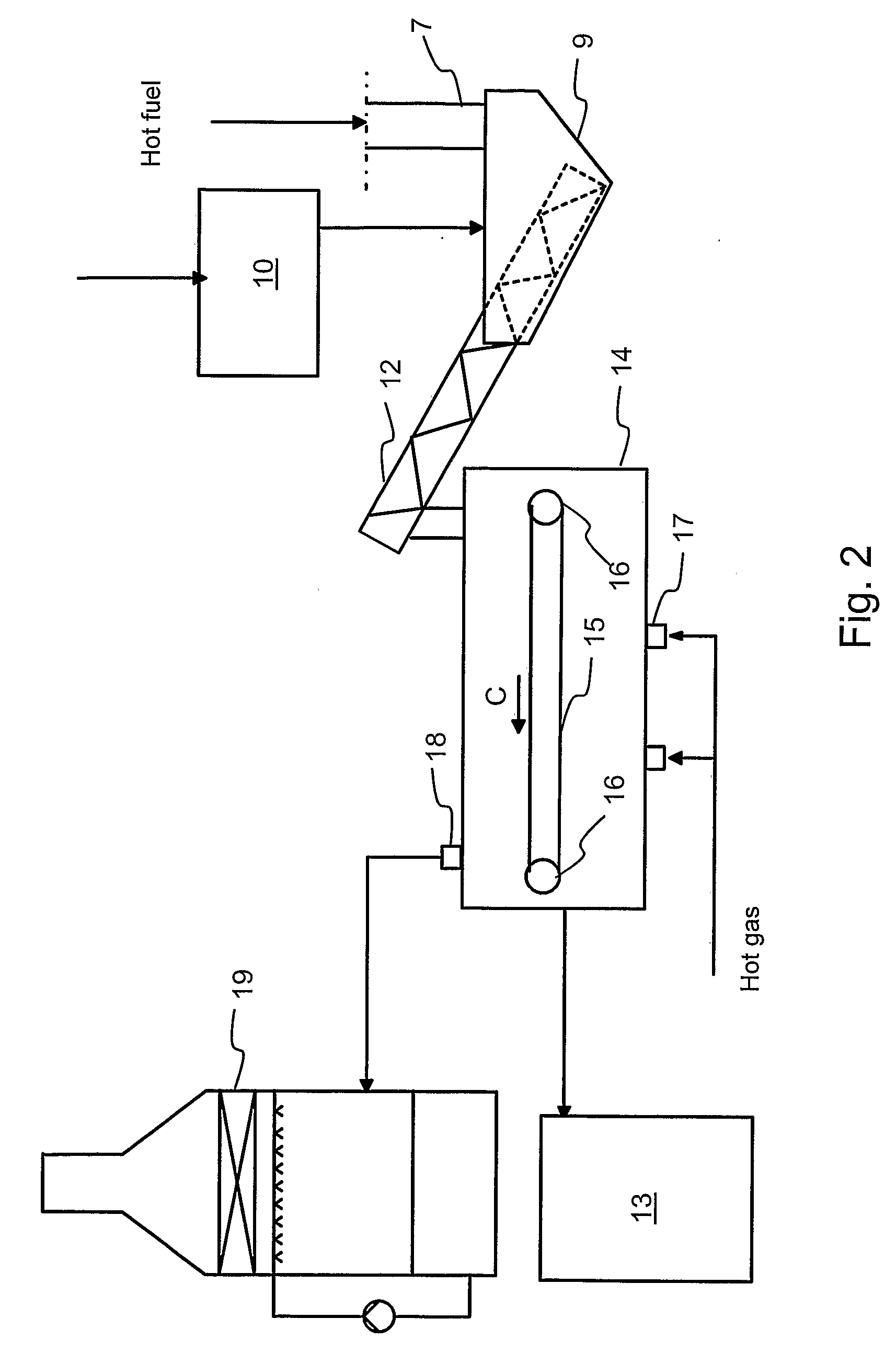Method and Apparatus for Reducing the Amount of Sludge Produced in a Pulp and/or Paper Mill
a technology of pulp and paper mills and sludge, which is applied in the direction of lighting and heating equipment, sludge treatment by oxidation, and separation processes, etc. it can solve the problems of smelting explosion hazards, affecting the efficiency of boilers, and requiring a great deal of accuracy in burning sludge in recovery boilers, so as to reduce the amount of sludge and reduce the processing load of waste water plants of the aforementioned mills.
- Summary
- Abstract
- Description
- Claims
- Application Information
AI Technical Summary
Benefits of technology
Problems solved by technology
Method used
Image
Examples
Embodiment Construction
[0020]FIG. 1 shows schematically an apparatus according to the invention for reducing the amount of sludges in a pulp or paper mill. The apparatus comprises heating means 1 for solid fuel, i.e. a steaming apparatus in which the fuel is heated and moisture is removed therefrom by means of hot gas obtained from the pulp or paper mill.
[0021] The fuel is supplied to the steaming apparatus 1 from the fuel storage bin, or if the fuel consists of wood chips, directly from chipping (not shown in the drawing). In the embodiment shown in FIG. 1, the heating of the fuel takes place in two stages. In the first fuel heating phase the wood chips are conveyed to a vertical first heating part 1a of the steaming apparatus 1 from its upper end. The fuel moves in the first heating part by means of gravity vertically downward according to the arrow A. Hot gas is conveyed to the first heating part 1a crosswisely with respect to the fuel flow from gas feeding pipes 2a and 2b. The feeding pipes are equip...
PUM
| Property | Measurement | Unit |
|---|---|---|
| Temperature | aaaaa | aaaaa |
| Fraction | aaaaa | aaaaa |
Abstract
Description
Claims
Application Information
 Login to View More
Login to View More - R&D
- Intellectual Property
- Life Sciences
- Materials
- Tech Scout
- Unparalleled Data Quality
- Higher Quality Content
- 60% Fewer Hallucinations
Browse by: Latest US Patents, China's latest patents, Technical Efficacy Thesaurus, Application Domain, Technology Topic, Popular Technical Reports.
© 2025 PatSnap. All rights reserved.Legal|Privacy policy|Modern Slavery Act Transparency Statement|Sitemap|About US| Contact US: help@patsnap.com



